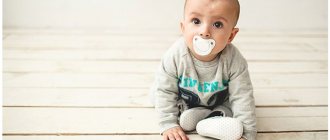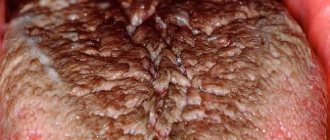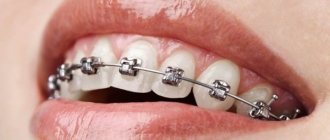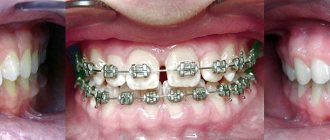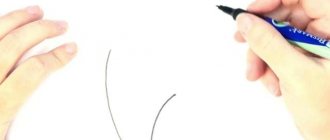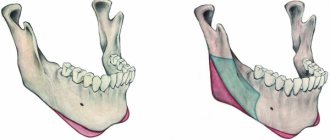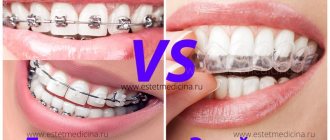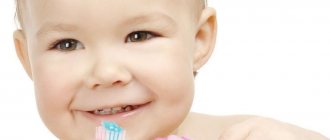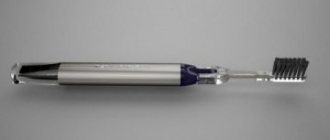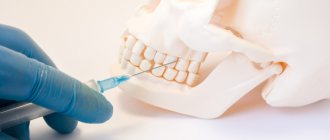Pacifiers for babies: is it worth giving?
There are still debates in society about whether it is possible to give a pacifier to a baby. Doctors say yes. But at the same time, parents must choose the right pacifier so that in the future there will be no problems with biting or latching onto the female nipple.
Particular attention should be paid to the material, shape and size of the pacifier. It helps in difficult situations when the child cries, is capricious, is bothered by the tummy and teething. It has been proven that sucking reflexes lull the baby to sleep and he becomes calmer. Many experienced parents offer Avent pacifiers to their baby before bedtime; with it, he falls asleep faster.
You should not overuse the pacifier, everything should be in moderation. If your baby cries, it doesn't mean he's asking for his favorite accessory. Perhaps he just needs his mother’s affection, care and attention.
At what age should a child be weaned off a pacifier?
Even in the womb, the baby develops a sucking reflex. Thanks to it, the child satisfies his hunger and relieves stress. Surely you have noticed that in moments of excitement, excitement or painful sensations, the baby begins to suck his fingers or the tip of the blanket. It’s just that he is not yet familiar with other ways to calm down. During the sucking process, the newborn fully concentrates on the activity and is distracted from external stimuli, forgetting about unpleasant sensations. For some time, a pacifier becomes an indispensable assistant for parents, but the time comes when they need to say goodbye to it.
Psychologists have their own opinion at what age to wean a child off a pacifier. They believe that this is a period from 3 to 12 months. If he is not ready to give it up, the next attempts are made when he is 1.5-2 years old and it is possible to come to an agreement with him. However, there are no rules indicating at what age a child should be weaned off a pacifier. Moreover, the negative attitude towards pacifiers is greatly exaggerated. They do not interfere with digestion, do not slow down intellectual development, and pacifiers with a beveled top do not in any way affect the formation of the baby’s dentition and bite. Therefore, when parents turn to pediatricians with the question of at what age to wean their child off a pacifier, they shrug their shoulders and deviate from the answer: when they themselves consider it necessary. Little children have different attitudes towards nipples: some instantly get used to them and don’t want to part with them, others need them only in case of emergency, for example, with insomnia or hysteria, and others satisfy the sucking instinct while feeding with mother’s milk and not at all. need a pacifier.
How to wean a child off a pacifier at 1 year old?
Babies up to one year old and a little older are weaned off the pacifier gradually over several months. Parents gradually reduce the time the child spends with the pacifier and try to engage their baby with other toys or games. If you decide that your one-year-old baby no longer needs a pacifier, be patient and take action:
- To begin with, try cutting the amount of time you use a pacifier by half, giving it to your baby only before lunch and bedtime.
- While the baby is active, he should not see the pacifier. In response to any request to give him a pacifier, try to distract him with bright toys. At this age, children especially love to look at colorful children's dishes. Perhaps the child will switch his attention and forget about the recent request.
- Don't take your pacifier outside. If you see that the baby is alarmed, try to distract his attention, especially since there are so many interesting things on the street: a dog runs by, a bird sits on a branch, etc.
- If your child already knows how to drink from a sippy cup or cup, stop feeding through a bottle with a nipple. The faster the child gets used to it, the faster he can wean himself off the pacifier.
- Give your child a pacifier only in cases where he really cannot calm down without it.
- A pacifier can be replaced by a nibbler - a mesh or silicone cap with a comfortable handle. Chopped vegetables or fruits are placed in the mesh and given to the baby instead of a pacifier. All large pieces of pulp will remain inside the nibbler. Usually children like this replacement.
- After some time, when the baby practically does not remember the pacifier during active hours, try giving it up before bed. Read a fairy tale, place your favorite “teddy friend” next to you and forget about the pacifier until the child himself reminds you of it.
Usually parents face the same problem: the child refuses to fall asleep without a pacifier. Toys distract attention for only a few minutes, and sometimes fairy tales are not at all interesting to him. The only way to deal with the problem is to exhaust the baby in a day. Try to spend as much active time as possible with your little one, take a walk in the fresh air, take a bath and eat a hearty meal before bed. The child should be tired during the day and want to sleep, no matter what the circumstances.
Parents who set out to wean their baby off the pacifier will have to constantly distract and entertain their child. At the same time, it is important that all family members act in the same way, and there are no situations when it is not easy to ask mom for a pacifier, but dad or grandmothers themselves put the treasured “toy” in their mouth. Be patient and you will see how gradually, step by step, the baby will stop remembering the pacifier, without which it was so scary to fall asleep just recently.
How to wean a child from a pacifier at 1.5-2 years old?
At 1.5-2 years old, the child already understands the explanations of adults and can come to an agreement with him. Usually parents simply hide the pacifier and say that it is lost. However, so that parting with the pacifier does not turn into a test for the baby, it is better to make sure that he voluntarily gives it up.
According to numerous reviews from parents, the most effective way to get their child to give up a pacifier is to come up with an interesting story about how little mice or kittens in the yard are scared to sleep without a pacifier and how happy they would be if someone gave them one. Fantasize as much as you like, the main thing is that the story is interesting, and the child understands that if he gives away his “toy”, he will do something significant. Oddly enough, children often willingly agree to such “charity” and give their pacifiers to cats and dogs, leave them under a tree for mice, or even send their pacifiers by letter. The more interesting the program is, the less the child will doubt the correctness of his action.
You can come up with a story that there is a good fairy to whom you can leave all your pacifiers under the door, and at night she will take them and give them to very small children (or animals) who need them more. If he is ready to help, in return the fairy will leave him some kind of toy that big children play with. Every child wants to grow up quickly and make their own decisions. If you come up with the right story in which he will look mature and independent, most likely your plan will succeed.
The main thing to remember is that the act of donation must be voluntary. If a child does not want to give up the pacifier, under no circumstances take it away from him by force and do not call him greedy. The process of giving up a pacifier should not turn into a drama.
Experienced mothers recommend
Today, on the windows of shops and pharmacies you can find many manufacturing companies that offer pacifiers. They differ in pricing policy and quality of material. Experienced parents advise taking a closer look at. The nipples from this company are odorless and made of good transparent material that feels like a mother’s breast. This accessory is durable and does not lose its shape. In addition, a huge selection of types of pacifiers helps to choose it individually for each baby.
Avent night pacifiers, photos of which are presented below, are the most popular and in demand.
This orthodontic pacifier takes into account the physiological characteristics of the structure of the baby’s gums and palate. Ideal for newborns. Thanks to the correct shape, which imitates the female nipple, you can be confident in the correct structure of the child’s bite in the future. A distinctive feature is the luminescent ring, which glows greenish in the dark. This is very convenient, even if the baby lost his pacifier in a dream and is capricious, the mother will quickly be able to find it without turning on the light and without disturbing the baby.
In order for such a pacifier to glow brighter, it must be periodically charged. It's very easy to do. Simply place the accessory under a fluorescent lamp and leave for a couple of minutes.
What types of nipples does Avent offer?
When choosing a pacifier for your baby, you need to choose the right shape so that it is comfortable for the baby to suck on it. Let's look at what types of Avent pacifiers there are:
- Classic nipple with a round shape. You probably had these in your childhood, the only difference is the material and design of the product. Such a pacifier reminds the baby of his mother’s breast, so he actively takes it into his mouth and quickly calms down.
- produces anatomically shaped pacifiers. They are ideal for the baby's mouth and have a slightly flattened shape. The creators pay special attention to the baby’s weight, so when choosing this product, pay attention not only to the baby’s age, but also to body weight.
- For those children who are breastfed, the Avent orthodontic pacifier is ideal. It completely resembles the shape of a woman’s nipple and contributes to the development of the child’s correct bite.
It is worth paying attention to the material from which the pacifier is made. Avent offers silicone and latex options:
- Latex models are softer and are used for newborn babies. Ideal for premature babies. The main disadvantage is the unpleasant taste and odor.
- The silicone model of the pacifier is made of synthetic transparent material, so there is no specific smell at all. Recommended for use in children prone to allergic reactions.
In addition to different types of nipples, it is possible to choose the design that suits you. A stylish accessory will make your baby more noticeable and bright.
Tips for use
- Choose the product correctly .
Pacifiers are made from silicone and latex; the first polymer material is denser, transparent and hypoallergenic. Latex models, according to the authoritative opinion of children's doctor Komarovsky, are suitable for children who can boast of protruding teeth. All products are intended for different age categories. Nipples have different structures: classic (round), physiological and orthodontic. - Maintain good hygiene . Store sterile replacement pacifiers in a jar or container with a lid and disinfect and replace them according to package instructions. Do you want your baby to have caries, gastritis or a cold? Lick the pacifier before giving it to your baby.
- Monitor the integrity of the product . If cracks appear, and even more so a hole or other damage, the pacifier must be changed without regret.
- Before giving a pacifier, determine the cause of the discomfort . Perhaps the baby is sweating or cold, he is worried about a full diaper, or he is scared. Provide comfort - and the baby will not need a sedative.
- Limit the time you use your pacifier . Give it only when there is really a need for it: on the street, when feeling unwell or overly excited. Remove the pacifier from a sleeping baby; it is not advisable to teach him to sleep with a pacifier in his mouth.
- Wean on time . If the baby does not wean himself off the pacifier by the age of one year, then it will be difficult for him to wean himself off the habit.
Are you planning to use a pacifier or not?
- Yes, sometimes 59%, 183 votes
183 votes 59%183 votes - 59% of all votes
- No, I am against pacifiers 21%, 67 votes
67 votes 21%
67 votes - 21% of all votes
- Yes, there's nothing wrong with that 20%, 62 votes
62 votes 20%
62 votes - 20% of all votes
Total votes: 312
03.07.2018
×
You or from your IP have already voted.
Size matters
To prevent your child from having problems with bite, you need to choose the right not only the shape of the nipple, but also its size. It will depend on the age of the baby. As a rule, manufacturers indicate age restrictions on the packaging of the pacifier (for example, 0-6 months, 6-9, 9-12, and so on). Pay attention to this. If the size is not suitable for the baby, parents will get the opposite effect: instead of the expected calm, the child will be even more capricious and cry.
Are there any analogues?
It's no secret that the cost of nipples is quite high. This is due to the fact that they are made of high-quality material, which undergoes all processing and is recommended by leading experts. There were no cases of allergic reactions or skin irritations in children.
Nevertheless, there is an analogue of Avent pacifiers - the Canpol Babies latex pacifier. This product is made in Poland. Manufacturers use cheaper material for their products, so the average cost of an accessory varies between 100-150 rubles.
Leading manufacturers of baby pacifiers
Buy pacifiers exclusively from well-known and trusted manufacturers. As practice shows, a popular brand is the key to high quality and safety. Products from little-known companies may contain chemical compounds hazardous to health.
When purchasing a pacifier for your baby, give preference to the following manufacturers:
- Dr. Brown;
- Philips AVENT;
- Canpol;
- Comotomo;
- Canpol babies;
- Kurnosiki (World of Childhood);
- Medela;
- Tommee Tippee;
- Chicco;
- Nuk;
- Pigeon;
- AURA;
- Nuby;
- TIGEX;
- MAM;
- Poma.
Modern pacifier manufacturers are constantly working to improve their products. Today, thermometer nipples and dispenser pacifiers are available on the market.
When choosing a pacifier for your baby, pay attention to the child's preferences. The main thing is that he likes this irreplaceable item in the baby’s life, is of high quality and safe.
Cleanliness is the key to health
Once the pacifier has been purchased, your main task is to keep it clean. As a rule, all Avent pacifiers come with plastic caps that protect them from dirt and germs.
It is important to remember that if the pacifier falls on the floor, you should not lick it and give it to the baby, thereby all your microbes will end up in his mouth.
Many people wonder how to sterilize Avent pacifiers. This can be done using special devices that are sold in household appliance stores, or by boiling.
It is worth noting that all types of pacifiers can be washed in the dishwasher and sterilized.
Pros and cons of Avent nipples
With the birth of a child, you want to give him all the best and most useful things. Experienced parents recommend focusing on products when choosing pacifiers. But, like any product, they have their pros and cons.
Among the advantages can be noted:
- high quality material;
- variety of shapes, sizes, designs;
- protective cap;
- Can be sterilized and washed in a dishwasher;
- availability.
The disadvantages are:
- high cost of goods (on average 350-400 rubles);
- Sometimes moisture can get inside and condensation may form.
Avent pacifiers receive excellent reviews from customers. The high cost is due to the good quality of the material and the use of modern technologies for production.
The best classic pacifiers
It is not surprising that most babies like classic pacifiers - they are soft, the same on all sides, and can be inserted into the mouth as you like. In addition, their cost is the most affordable, so it is not so expensive to buy them periodically in case of need for replacement.
Philips Avent Classic SCF195/03 0-6 months.
Rating: 4.9
The Philips Avent brand has firmly established itself in the baby products market, so many parents first pay attention to its products. Thus, the Philips Avent Classic SCF195/03 pacifier for babies from birth to six months is the best-selling - both children and their parents like it. The nipple is silicone, but soft - the manufacturer managed to soften this hypoallergenic material without losing quality. The shape is comfortable, while activating all the main muscles of the face and satisfying the sucking need.
Philips Avent Classic SCF195/03 is sold in a set of two with different pictures on the holder and bright ring handles. Each product is provided with a protective snap-on cap for convenient storage and transportation of the product.
A set of two Philips Avent Classic SCF195/03 pacifiers for children from 0 to 6 months costs about 400 rubles.
Advantages
- Calm but bright design;
- Snap caps;
- 2 pacifiers included;
- Streamlined natural shape of the sucking part made of soft silicone;
Flaws
- Not detected.
Dr.Brown's pacifier from 0 to 6 months
Rating: 4.8
In second place is the classic pacifier from the slightly less well-known brand Dr. Brown's PreVent for babies from birth to six months. Its uniqueness lies in its special pear shape with a relatively narrow tip and widened base, similar to a bottle nipple. This promotes the development of oral muscles and the acquisition of eating skills.
The pacifier's protective plate is equipped with ventilation holes so that during prolonged sucking the skin around the lips does not sweat or rub. There is no traditional ring for removal; it is replaced by a fixed console holder with a hole, into which you can insert a cord or a clothespin ring for clothes.
Dr.Brown's from 0 to 6 months one in a set, you can buy it from 300 rubles.
Advantages
- Soft silicone nipples;
- Convenient console holder;
- Ventilation channels on the protective plate;
- Compact dimensions;
Flaws
- None.
Philips Avent Night SCF176/22, 6-18 months.
Rating: 4.8
Another pacifier from Philips Avent Night series SCF176/22 is suitable for babies from 6 to 18 months. Its distinctive feature is a luminous ring, thanks to which the product can be easily found at night. However, some users note the weak ability to accumulate solar energy, which is why the pacifier took third place, not fully meeting users' expectations.
The pacifier is made in a classic shape, following the contours of the palate, it is comfortable to suck, and the hypoallergenic and completely tasteless silicone does not confuse children. The set includes 2 pacifiers with protective caps. You can buy a pair of Philips Avent Night SCF176/22 from 470 rubles.
Advantages
- A pair of pacifiers with caps included;
- Wide age range of use;
- Convenient pacifier shape;
- Glowing ring for searching at night;
Flaws
- The ring does not always accumulate the required amount of light;
- High price.

